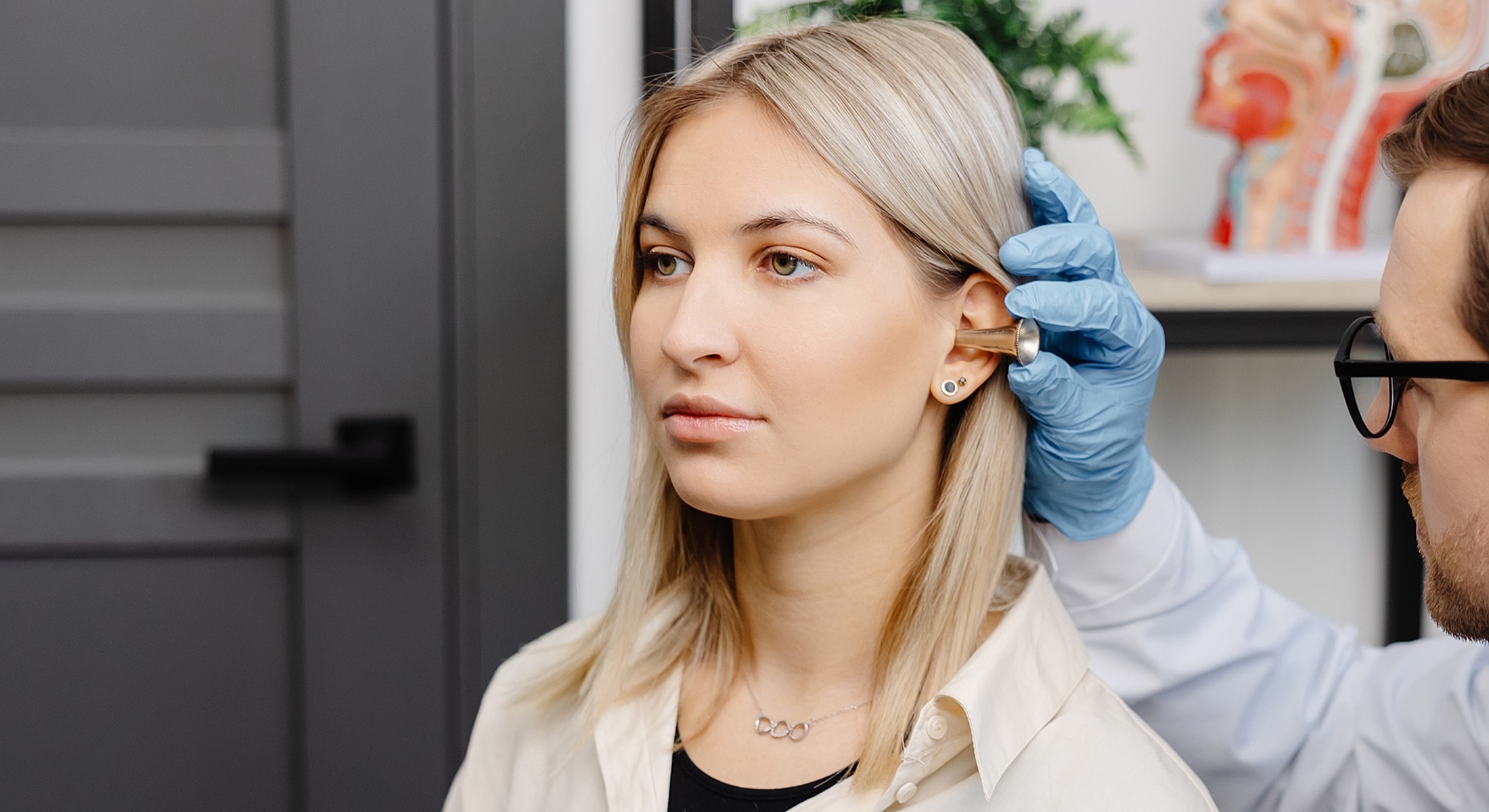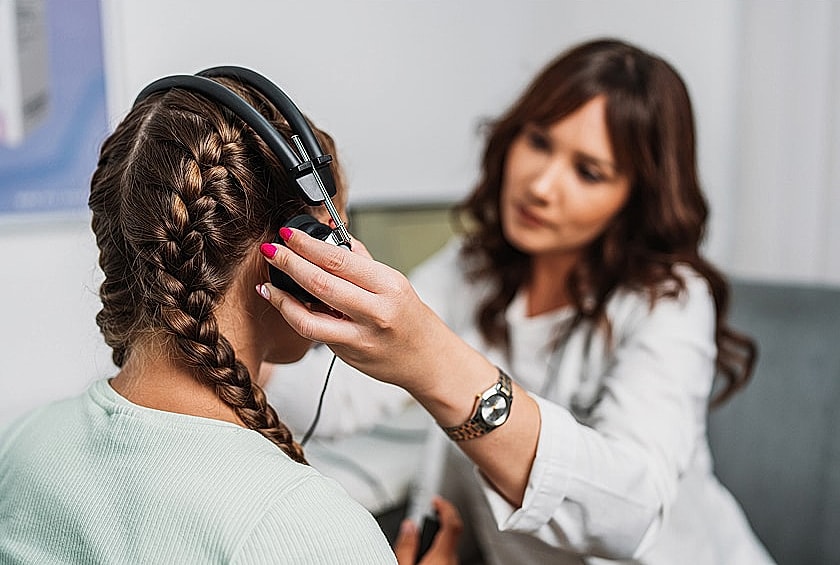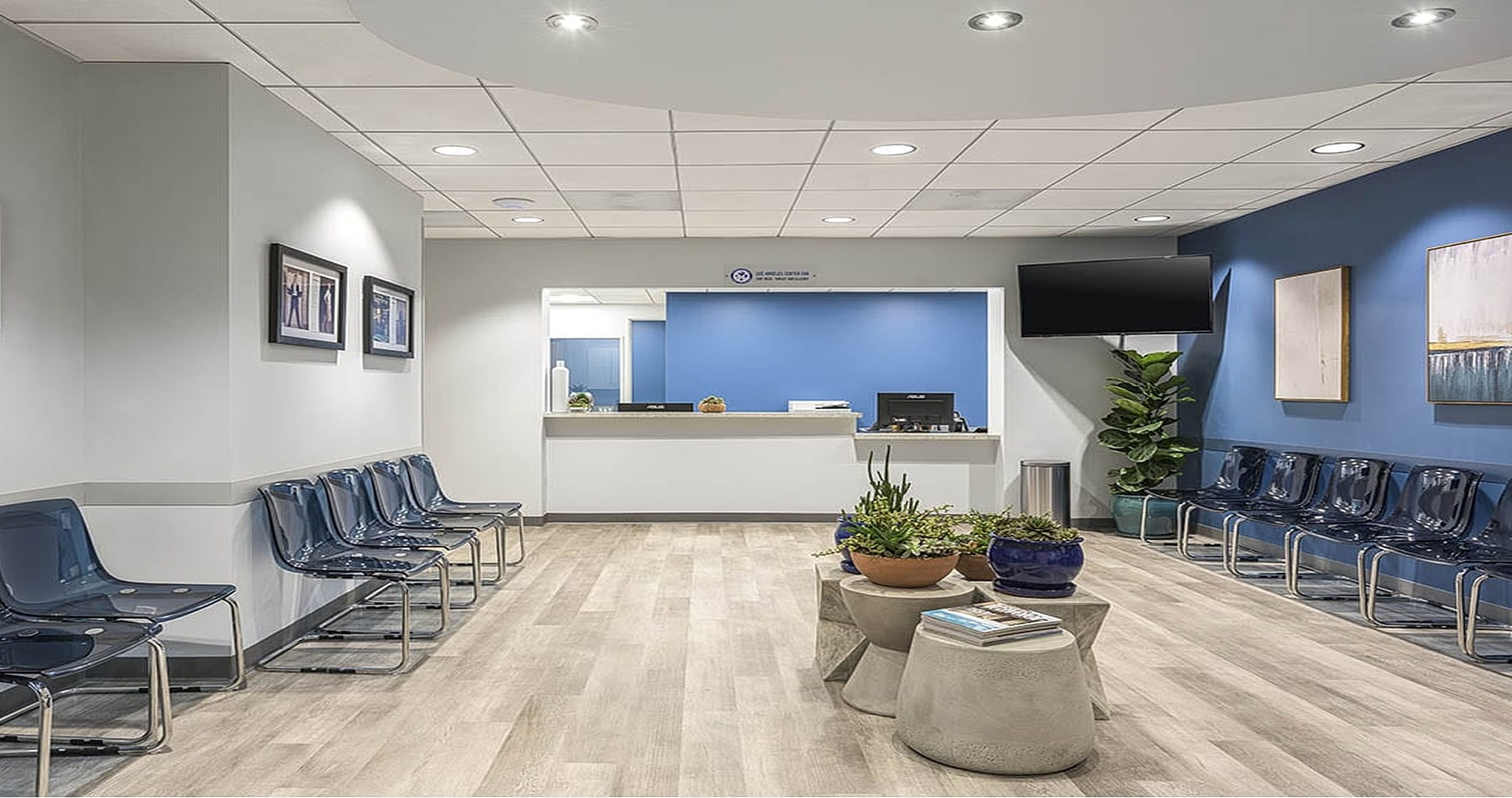
















A perforated eardrum can lead to hearing loss, recurring ear infections, and discomfort, impacting your daily life. Whether caused by infection or trauma, an eardrum perforation can sometimes heal on its own, but when it doesn’t, medical intervention may be necessary to restore function and prevent complications.
At Southern California Center for Ear, Nose, Throat, and Allergy (SoCal ENT), our board-certified ENT specialists offer advanced techniques for minimally invasive eardrum repair, ensuring the best possible results with minimal downtime. Our team takes a personalized approach, using the latest surgical advancements to achieve precise, lasting outcomes. If you’re experiencing ear pain, hearing loss, or persistent infections, our specialists can help restore your ear health and hearing clarity.





A hole or tear in the eardrum—also called the tympanic membrane—can occur due to infection, injury, or chronic ear conditions, leading to hearing loss, recurrent infections, and ear discomfort. While small perforations may heal naturally, larger or persistent perforations often require medical intervention to ensure proper healing and long-term ear health.
At SoCal ENT, we offer multiple treatment options based on the severity of the perforation, including minimally invasive office-based repairs and advanced tympanoplasty surgery. Both approaches are designed to restore hearing, reduce infection risk, and improve overall ear function.
Our team will begin by diagnosing the extent of your eardrum perforation and recommend a treatment based on your needs. Depending on the extent of perforation, one of two procedures may be recommended: a paper patch myringoplasty or tympanoplasty (surgical eardrum repair). We will educate you about each step of the procedure and work to ensure your comfort throughout.
For small perforations, our specialists may perform a paper patch myringoplasty, a quick in-office procedure that encourages natural healing. During this treatment, a thin medical-grade paper patch is placed over the hole in the eardrum. This patch stimulates tissue regrowth, allowing the eardrum to heal over time. Some cases may use a gel foam patch or a small amount of fat tissue from the ear for additional support.
For larger or chronic perforations, tympanoplasty may be necessary to reconstruct the eardrum using a natural tissue graft. Our ENT surgeons use minimally invasive techniques, either working through the ear canal or making a small incision behind the ear to access the eardrum. A graft, typically taken from fascia (connective tissue) or perichondrium (cartilage lining), is carefully placed over the perforation. Dissolvable packing material may be placed inside the ear to support healing. The procedure is outpatient, meaning you can return home the same day.

Eardrum repair not only restores hearing but also protects your ear from long-term complications.
A strong, intact eardrum allows sound to travel effectively to the inner ear, preserving hearing clarity. Repair also prevents bacteria and moisture from entering the middle ear, reducing the risk of ear infections. Symptoms like ear pain, persistent fluid discharge, and pressure issues are resolved by repairing a perforated ear drum. By reinforcing the eardrum, treatment can also help prevent recurrent perforations.
Eardrum repair is essential for treating perforations that do not heal on their own. Common conditions that benefit from tympanoplasty include:
Holes in the eardrum from infections, trauma, or pressure changes.
Recurrent infections can weaken the eardrum, leading to persistent perforations.
Perforations disrupt sound transmission, reducing hearing clarity.
A perforated eardrum can allow bacteria and moisture into the middle ear.
A myringoplasty or tympanoplasty procedure improves hearing, prevents infections, and enhances overall ear health by restoring the eardrum's structure and function.

Our specialists will perform a comprehensive ear evaluation to diagnose any perforation and determine the best treatment approach for your condition. You may be a candidate for eardrum repair if you have:
Most healthy adults and children with chronic or large perforations are ideal candidates for tympanoplasty.

Most patients recover quickly after an in-office paper patch procedure, with minimal discomfort. For tympanoplasty, healing typically takes a few weeks to a few months, depending on the size of the perforation and the surgical technique used.
Patients will be advised to avoid getting water in the ear while healing and refrain from activities that cause pressure changes, such as flying or diving, for several weeks. A follow-up with their ENT specialist will ensure proper healing. Our team provides personalized aftercare instructions to support a smooth and effective recovery.

Following eardrum repair, most patients experience significant improvements in hearing clarity and overall ear health. As the eardrum heals, sound transmission improves, allowing for better communication and a more natural listening experience.
Many patients also notice a reduction in ear infections and discomfort, as the repaired eardrum prevents bacteria and moisture from entering the middle ear. Over time, the eardrum becomes stronger and more resilient, minimizing the risk of future perforations.
While healing times vary, most individuals see steady progress within a few weeks, with full recovery typically achieved in a few months. By following post-procedure care guidelines, patients enjoy lasting relief from symptoms, improved hearing, and greater overall comfort.
Most procedures involve minimal discomfort, and pain is easily managed with medication.
A paper patch procedure typically takes 30 minutes or less, while tympanoplasty may take from 30 minutes up to a couple of hours, depending on the complexity of the eardrum repair.
Yes, most patients experience significant hearing improvements once healing is complete.
Healing varies but generally takes a few weeks to a few months. Most patients return to normal activities quickly, however. Your specialist will provide detailed aftercare guidelines, check your healing after the procedure, and remain available throughout your recovery to address any questions or concerns.
Yes, tympanoplasty is commonly performed in children with chronic eardrum perforations.